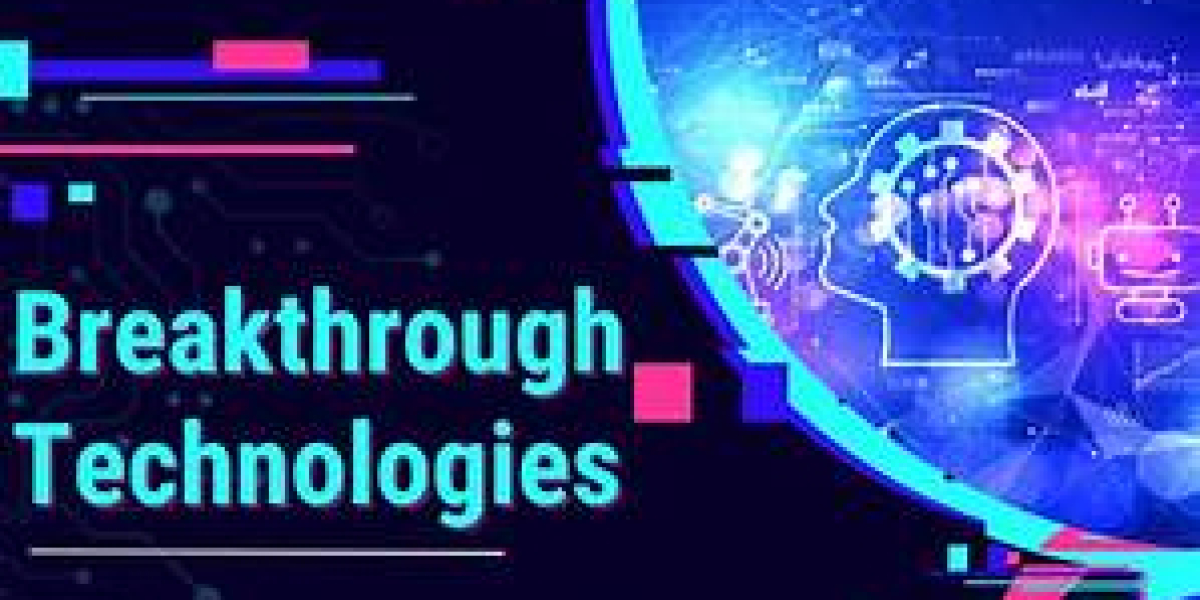Title: 10 Breakthrough Technologies 2024 | MIT Technology Review
Main Heading: 10 Breakthrough Technologies 2024
Web Page Topics Index:
1. AI for everything
2. Super-efficient solar cells
3. Apple Vision Pro
4. Weight-loss drugs
5. Enhanced geothermal systems
6. Chiplets
7. The first gene-editing treatment
8. Exascale computers
9. Heat pumps
10. Twitter killers
Content:
10 Breakthrough Technologies 2024
Every year, we look for promising technologies poised to have a real impact on the world. Here are the advances that we think matter most right now.
1. AI for everything
We now live in the age of AI. Hundreds of millions of people have interacted directly with generative tools like ChatGPT that produce text, images, videos, and more from prompts. Their popularity has reshaped the tech industry, making OpenAI a household name and compelling Google, Meta, and Microsoft to invest heavily in the technology. Connect with the experts at our signature AI conference, EmTech Digital in London April 16-17 and the MIT Campus May 22-23.
2. Super-efficient solar cells
Solar power is being rapidly deployed around the world, and it’s key to global efforts to reduce carbon emissions. But most of the sunlight that hits today’s panels isn’t being converted into electricity. Adding a layer of tiny crystals could make solar panels more efficient.
3. Apple Vision Pro
Apple will start shipping its first mixed-reality headset, the Vision Pro, this year. Its killer feature is the highest-resolution display ever made for such a device. Will there be a killer app? It’s early, but the world’s most valuable company has made a bold bet that the answer is yes.
4. Weight-loss drugs
The global rise in obesity has been called an epidemic by the World Health Organization. Medications like Mounjaro and Wegovy are now among the most powerful tools that patients and physicians have to treat it. Evidence suggests they can even protect against heart attacks and strokes.
5. Enhanced geothermal systems
Geothermal energy is clean, always available, and virtually limitless. However, because of engineering challenges, we have barely scratched the surface of what it can offer. New drilling techniques, which dig deeper and in places where we couldn’t before, are unleashing more of Earth’s heat to produce clean energy.
6. Chiplets
It’s getting devilishly hard to make transistors smaller—the trend that defines Moore’s Law and has driven progress in computing for decades. Engineers must now find new ways to make computers faster and more efficient. Chiplets are small, specialized chips that can be linked together to do everything a conventional chip does, and more.
7. The first gene-editing treatment
New treatments based on CRISPR have been in the works for years. In the final weeks of 2023, one from Vertex became the first to earn regulatory approval in both the UK and the US for its ability to cure sickle-cell disease, a life-threatening condition. It won’t be the last.
8. Exascale computers
The world’s fastest supercomputers can now perform more than an exaflop’s worth of calculations (that’s a 1 followed by 18 zeros). New machines that can crunch scientific data at these speeds will enable scientists to perform more sophisticated simulations of the climate, nuclear fission, turbulence, and more.
9. Heat pumps
Don’t let the name fool you. Heat pumps are electric appliances that can both cool and heat buildings, and wider adoption could substantially reduce emissions. Sales have increased around the world; in the US, they have surpassed gas furnaces for the first time. New types that run at higher temperatures could help decarbonize industry, too.
10. Twitter killers
Elon Musk bought the site now known as X in 2022, and virtually nothing about it has been the same since. He fired most of the staff and dispensed with content moderation, scaring off advertisers and users alike. Now, as alternatives like Bluesky, Threads, and others gain ground, the central town square has given way to private rooms.
Vote for the 11th breakthrough:
What’s missing from the list? Tell us what you think the 11th breakthrough should be. We’ll reveal the winner on April 15, 2024.
Back to top
About the List: 10 Breakthrough Technologies
Every year, the reporters and editors at MIT Technology Review survey the tech landscape and pick 10 technologies that we think have the greatest potential to change our lives in the years ahead. We consider advances in every field, from biotechnology and artificial intelligence to computing, robotics, and climate tech. This is the 23rd year we’ve published this list. Here’s what didn’t make the cut. Explore the archives.
Credits:
Editorial
Special projects editor: Amy Nordrum
Editing: Rachel Courtland, Niall Firth, Mary Beth10 Breakthrough Technologies 2024 | MIT Technology Review
Every year, we look for promising technologies poised to have a real impact on the world. Here are the advances that we think matter most right now.
AI for everything
We now live in the age of AI. Hundreds of millions of people have interacted directly with generative tools like ChatGPT that produce text, images, videos, and more from prompts. Their popularity has reshaped the tech industry, making OpenAI a household name and compelling Google, Meta, and Microsoft to invest heavily in the technology. Connect with the experts at our signature AI conference, EmTech Digital in London April 16-17 and the MIT Campus May 22-23.
Super-efficient solar cells
Solar power is being rapidly deployed around the world, and it’s key to global efforts to reduce carbon emissions. But most of the sunlight that hits today’s panels isn’t being converted into electricity. Adding a layer of tiny crystals could make solar panels more efficient.
Apple Vision Pro
Apple will start shipping its first mixed-reality headset, the Vision Pro, this year. Its killer feature is the highest-resolution display ever made for such a device. Will there be a killer app? It’s early, but the world’s most valuable company has made a bold bet that the answer is yes.
Weight-loss drugs
The global rise in obesity has been called an epidemic by the World Health Organization. Medications like Mounjaro and Wegovy are now among the most powerful tools that patients and physicians have to treat it. Evidence suggests they can even protect against heart attacks and strokes.
Enhanced geothermal systems
Geothermal energy is clean, always available, and virtually limitless. However, because of engineering challenges, we have barely scratched the surface of what it can offer. New drilling techniques, which dig deeper and in places where we couldn’t before, are unleashing more of Earth’s heat to produce clean energy.
Chiplets
It’s getting devilishly hard to make transistors smaller—the trend that defines Moore’s Law and has driven progress in computing for decades. Engineers must now find new ways to make computers faster and more efficient. Chiplets are small, specialized chips that can be linked together to do everything a conventional chip does, and more.
The first gene-editing treatment
New treatments based on CRISPR have been in the works for years. In the final weeks of 2023, one from Vertex became the first to earn regulatory approval in both the UK and the US for its ability to cure sickle-cell disease, a life-threatening condition. It won’t be the last.
Exascale computers
The world’s fastest supercomputers can now perform more than an exaflop’s worth of calculations (that’s a 1 followed by 18 zeros). New machines that can crunch scientific data at these speeds will enable scientists to perform more sophisticated simulations of the climate, nuclear fission, turbulence, and more.
Heat pumps
Don’t let the name fool you. Heat pumps are electric appliances that can both cool and heat buildings, and wider adoption could substantially reduce emissions. Sales have increased around the world; in the US, they have surpassed gas furnaces for the first time. New types that run at higher temperatures could help decarbonize industry, too.
Twitter killers
Elon Musk bought the site now known as X in 2022, and virtually nothing about it has been the same since. He fired most of the staff and dispensed with content moderation, scaring off advertisers and users alike. Now, as alternatives like Bluesky, Threads, and others gain ground, the central town square has given way to private rooms.
Vote for the 11th breakthrough:
What’s missing from the list? Tell us what you think the 11th breakthrough should be. We’ll reveal the winner on April 15, 2024.
About the List: 10 Breakthrough Technologies
Every year, the reporters and editors at MIT Technology Review survey the tech landscape and pick 10 technologies that we think have the greatest potential to change our lives in the years ahead. We consider advances in every field, from biotechnology and artificial intelligence to computing, robotics, and climate tech. This is the 23rd year we’ve published this list. Here’s what didn’t make the cut. Explore the archives.
Credits:
Editorial
Special projects editor: Amy Nordrum
Editing: Rachel Courtland, Niall Firth, Mary Beth







